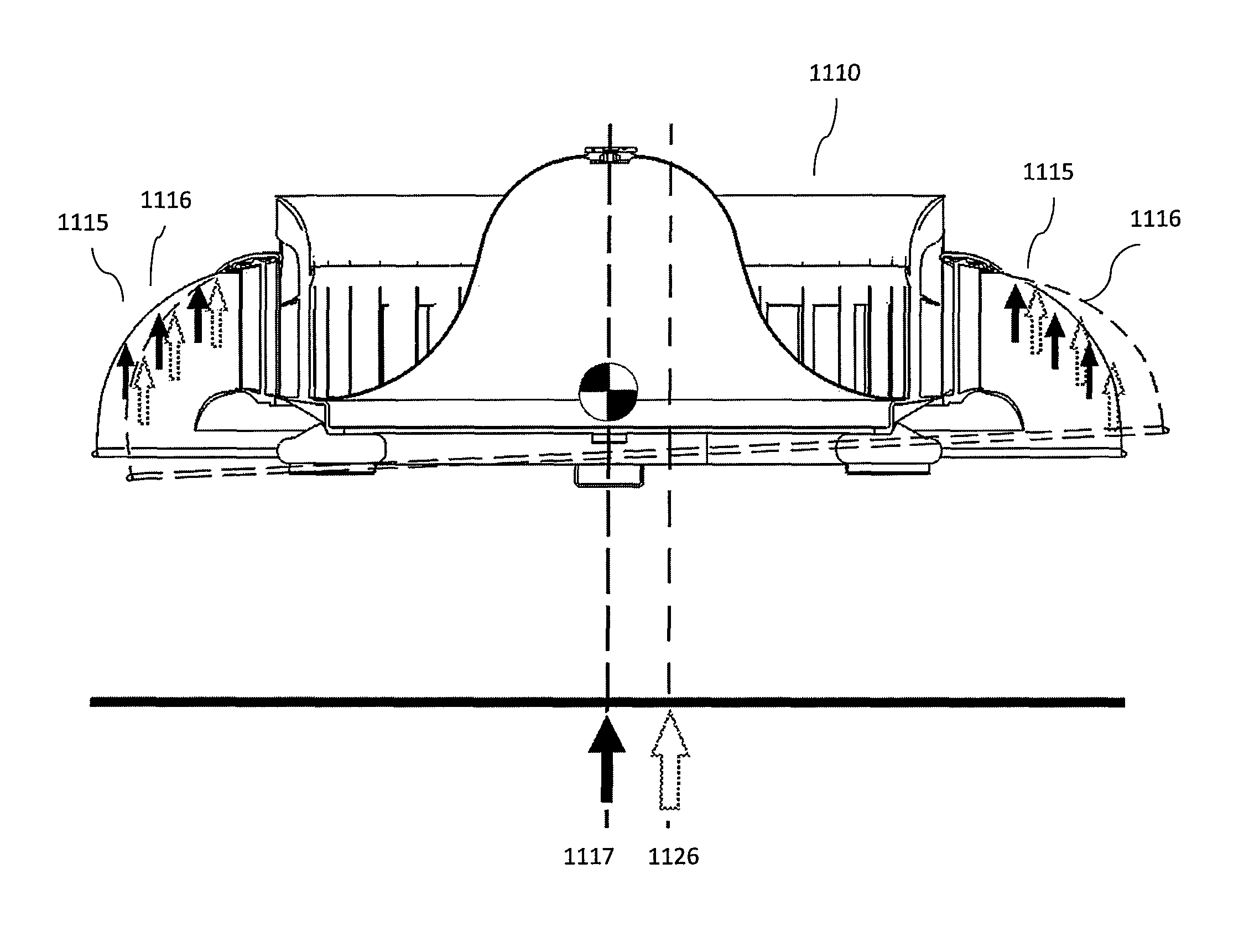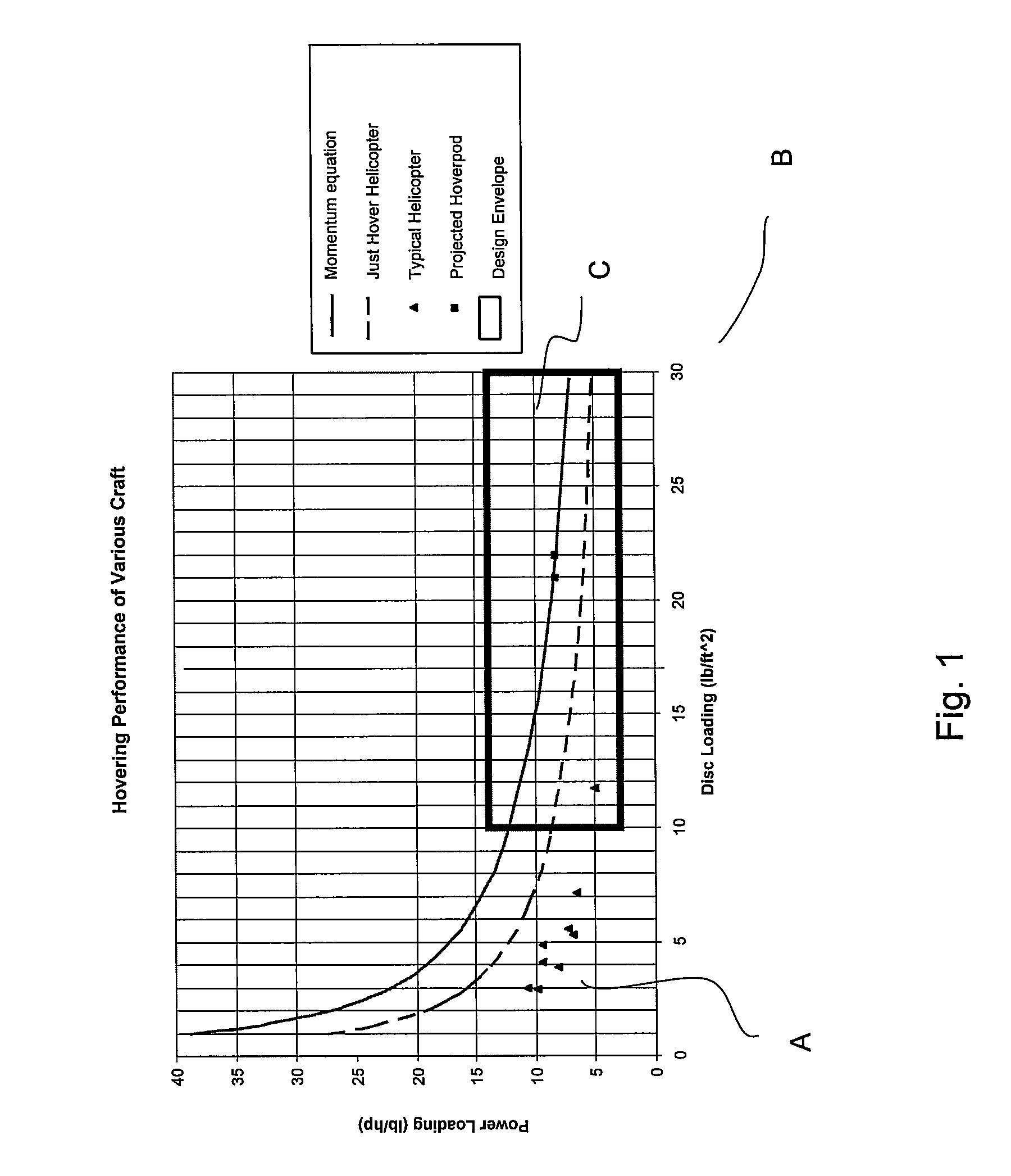Aerodynamic lifting device and airborne craft
a lifting device and airborne technology, applied in the direction of airflow influencers, vertical landing/take-off aircrafts, air navigation control, etc., can solve the problems of limited penetration of motorized recreational products and general transportation of personnel, inability to operate over terrain with obstacles of significant size, and increase in the operating height of hovercrafts accompanied by unrealistic horsepower requirements, so as to achieve less noise
- Summary
- Abstract
- Description
- Claims
- Application Information
AI Technical Summary
Benefits of technology
Problems solved by technology
Method used
Image
Examples
Embodiment Construction
[0095]Referring to FIG. 1 there is shown a power loading (“y”)-disc loading (“x”) characteristic conventionally used in the field of helicopter design and showing operating points for helicopters using long rotating blades in accordance with current practice. These points assist in defining an operating region for current hovering craft which corresponds to a region in which power loading asymptotes and which may be described as the power loading or y asymptotic region “A”. Intermediate this region and the disc loading or x asymptotic region, “B”, lies an intermediate region “C” forming the design envelope for airborne hovering craft forming one aspect of this invention. The intermediate region “C” may also be defined, by way of more specific example, as an operating region in which an aerodynamic lifting device or airborne craft (referred to as a “Hoverpod” aircraft) has a band of disc loadings or weight per unit of lift area from 10 to 30 lb / sq ft as shown on the horizontal, or “X...
PUM
 Login to View More
Login to View More Abstract
Description
Claims
Application Information
 Login to View More
Login to View More - R&D
- Intellectual Property
- Life Sciences
- Materials
- Tech Scout
- Unparalleled Data Quality
- Higher Quality Content
- 60% Fewer Hallucinations
Browse by: Latest US Patents, China's latest patents, Technical Efficacy Thesaurus, Application Domain, Technology Topic, Popular Technical Reports.
© 2025 PatSnap. All rights reserved.Legal|Privacy policy|Modern Slavery Act Transparency Statement|Sitemap|About US| Contact US: help@patsnap.com



